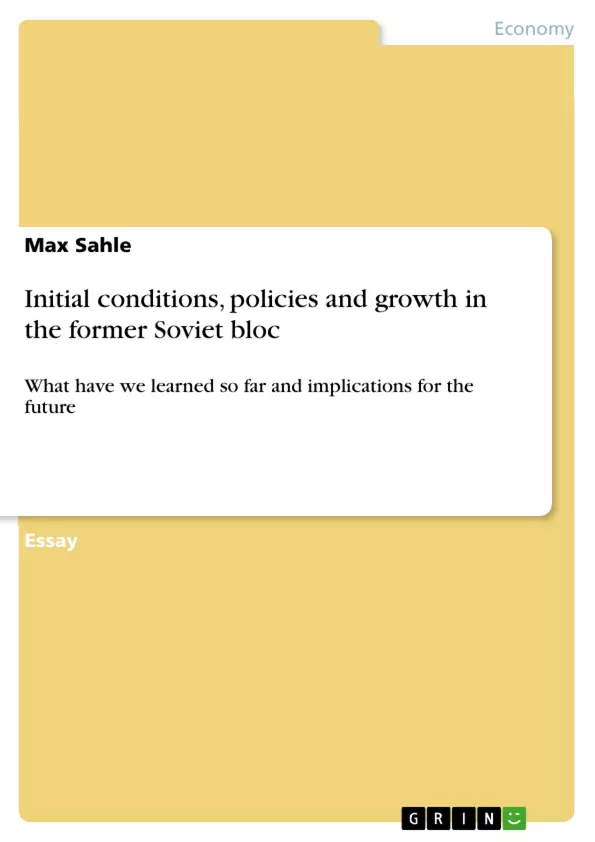By the late 1980s, the ever more apparent failures and shortcomings of the planned economy and the collapse of the Communist political system in almost all countries of the Soviet Block enabled dramatic changes to all parts of society and the economy. Since the market economies of Western Europe and North America were the obvious reference point, transforming the planned economies into functioning market economies became a priority. This transition would ensure a better allocation of resources as well as technological progress and innovation and foster sustainable economic growth. To achieve this, it was necessary to profoundly change the underlying structures and incentives of the planned economy. While each country embarked on its own path towards a market economy, there is little dispute as to what reforms were necessary to get the new economic system going. Following Hare these include: (1) macroeconomic stabilisation; (2) price and trade liberalization; (3) privatization and enterprise restructuring; and (4) institutional reforms.
This essay examines the impact of some of these reforms on growth. It will also look into how initial conditions explain differences in growth outcomes that can’t be fully explained by policy choices. Focusing on inflation and fiscal balances, the first section will explore the role of macroeconomic stabilization in fostering growth. This is followed by section 2 and 3 which examine institutional reforms and liberalization. Section 5 takes a look at initial conditions in the form of overall development and economic distortions at the start of the transition period. Section 6 concludes and draws implications for the future.
Inhaltsverzeichnis (Table of Contents)
- Introduction
- Macroeconomic stabilisation and growth
- The role of institutions
- Liberalisation policies
- Initial Conditions and Soviet Legacies
- Conclusion and implications for the future
Zielsetzung und Themenschwerpunkte (Objectives and Key Themes)
This essay investigates the impact of various reforms on economic growth in countries transitioning from planned economies to market economies, particularly within the former Soviet bloc. It aims to understand how initial conditions and policy choices contribute to varying growth outcomes.- The role of macroeconomic stabilization in fostering growth
- The impact of institutional reforms on economic development
- The relationship between liberalization policies and growth trajectories
- The influence of initial conditions and Soviet legacies on transition outcomes
- The implications of these findings for future economic development in the region
Zusammenfassung der Kapitel (Chapter Summaries)
- Introduction: This section sets the context by discussing the transition from planned to market economies in former Soviet bloc countries. It highlights the key reforms necessary for successful transition, including macroeconomic stabilization, price and trade liberalization, privatization, and institutional reforms.
- Macroeconomic stabilisation and growth: This section examines the importance of macroeconomic stability, measured by inflation rates and fiscal deficits, for achieving economic growth. It explores the relationship between inflation and growth, including the concept of an inflation threshold and the potential for a two-way relationship between macroeconomic stability and growth.
- The role of institutions: This section focuses on the impact of institutional development on economic growth in transition economies. It discusses the use of EBRD transition indicators to measure institutional progress and the relationship between institutional reforms and growth outcomes.
Schlüsselwörter (Keywords)
This essay examines key themes of economic transition, focusing on macroeconomic stabilization, institutional development, liberalization policies, and initial conditions in the context of former Soviet bloc countries. It analyzes the relationships between these factors and economic growth, utilizing concepts such as inflation thresholds, EBRD transition indicators, and the impact of Soviet legacies.- Quote paper
- Max Sahle (Author), 2013, Initial conditions, policies and growth in the former Soviet bloc, Munich, GRIN Verlag, https://www.grin.com/document/281611



